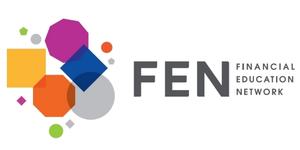LIAM Highlights Key Proposals for Budget 2025 to Promote Financial Inclusion and Protection for All Malaysians
(Issued by the Chief Executive Officer of Life Insurance Association of Malaysia, Mr Mark O’Dell in conjunction with the tabling of Budget 2025 by the Minister of Finance Malaysia scheduled on Friday, 18 October 2024)
Kuala Lumpur, 8 October 2024: With the upcoming tabling of Malaysia’s 2025 Budget by the Minister of Finance, YAB Dato’ Seri Anwar Ibrahim, the Life Insurance Association of Malaysia (LIAM) wishes to present its proposals for enhancing financial inclusion and raising awareness of the importance of financial protection among the Rakyat.
For Budget 2025, the life insurance industry put forward three key proposals aimed to strengthen healthcare coverage and overall well-being for Malaysians. These proposals encourage more proactive planning for protection needs and expand insurance coverage for both the general public and employees across the country.
Proposal 1: Expand Tax Relief for Medical and Health Insurance
LIAM proposes:
• Including medical insurance premiums with co-payment plans in the existing RM8,000 tax relief for medical expenses covering self, spouse, and children, AND
• Increasing the combined tax relief for education, medical, and health insurance from RM3,000 to RM6,000.
In the Budget 2021, the Government increased the tax relief limit on medical expenses for self, spouse and children for serious diseases from RM6,000 to RM8,000. This tax relief should be extended to include medical insurance premiums with co-payment plans for self, spouse and children.
Currently, there is a RM3,000 tax relief available to taxpayers on insurance premium paid for medical and education insurance policy combined. We wish to highlight that this amount is indeed insufficient in most circumstances as illustrated below:
The cost of medical insurance for an average family of two adults and three children will be above RM3,000 per annum at the lower end. Hence, there is no savings for premium per annum for this family to support the education policy of the three children, which is not enough.
Given the importance of having health insurance for Malaysians, the tax relief for this type of insurance plan should be increased.
The rationale behind these proposals is firstly, it will lift the burden of potentially large medical expenses from the taxpayer due to the pooling of risk. Secondly, the cost of medical expenses typically increases with age and taxpayers are utilizing their current income to fund for their future long term medical needs. By specifically encouraging medical and health insurance with co-payment plans for self, spouse and children, it will help policyholders manage the cost of medical premiums in the long run.
This increase is necessary to ease the financial burden on taxpayers caused by the rising costs of medical care. In 2023, Malaysia’s medical cost inflation surged to 12.6%, far exceeding the global average of 5.6%, and ranking among the highest in the Asia-Pacific region. Medical costs typically escalate with age, and many taxpayers are relying on their current income to fund future long-term healthcare needs.
The life insurance industry plays a critical role in helping Malaysians plan for their protection needs—whether in healthcare, medical coverage, or education for their children. In 2023 alone, the life insurance sector disbursed RM13.4 billion in benefit payouts, of which RM6.2 billion were for medical insurance claims. These figures highlight the vital role of medical insurance in managing healthcare costs for policyholders.
By increasing the tax relief for medical and health insurance, families would no longer have to compromise on purchasing education insurance for their children. Education is a priority for every parent, and an education insurance policy is essential in helping them save for their children’s future. Failing to plan adequately for their education could hinder the children from reaching their full potential.
On the other hand, education for the children is something that every parent should endeavor to secure for their child at all costs. Hence, an education insurance policy is important as it serves as a savings tool to provide for university education. This will help families to reduce reliance on the PTPTN loans. It was reported as of 31 October 2023 that the amount of accumulated student loan was about RM70.91 billion involving 3.92 million students.
Given the escalation in university fees for tertiary education, today’s parents should be encouraged to take up an education policy as financial planning to fund for their children’s future education.
Proposal 2: Standardize RM10 Stamp Duty for Policy Assignment
In Budget 2024, the Government introduced a proposal to charge a fixed stamp duty rate of RM10 for the deed of transfer of ownership of property involving beneficiaries, aligning with their eligibility according to wills, faraid, or the Distribution Act 1958. LIAM urges the Government to include this favourable RM10 stamp duty rate to the assignment of insurance policies, based on love and affection.
Prior to December 2021/January 2022, policyholders were only required to pay a flat RM10.00 stamp duty for policy assignment. However, starting in January 2022, certain stamp duty offices began applying ad valorem rates for assignments based on love and affection, resulting in higher costs for policyholders.
This change disregards the purpose of life insurance, which is intended to protect family members in unforeseen circumstances. Unlike assets like stocks or property, life insurance does not provide commercial market value benefits to the assignee. The burden of stamp duty falls on policyholders, not insurance companies, and imposing high stamp duties contradicts the Stamp Act, which imposes nominal stamp duty on policies. Additionally, it could deter policy assignments, defeating the purpose of insurance policies.
Given these considerations, LIAM earnestly requests the Government to standardize the stamp duty rate at RM10 for policy assignments based on love and affection.
Proposal 3: Waiver of 8% Service Tax on Group Employee Insurance Scheme
LIAM would like to propose that the 8% service tax on Group Employee Insurance Scheme be abolished. This will encourage employers to insure their staff under a Group Employee Insurance Scheme and thereby increasing the penetration rate of workers.
Based on published statistics, less than half of the employees are being covered by any form of group insurance.
| Group Insurance Coverage | 2020 | 2021 | 2022 | 2023 |
|
Number of lives insured
(in million) a
|
3.0 | 3.5 | 3.7 | 4.1 |
| Number of employed (in million) b | 15.0 | 15.1 | 15.9 | 15.6 |
| Proportion of employees insured | 20% | 23% | 23% | 26% |
Source:
a) MHIT Statistics from ISM
b) Department of Statistics Malaysia
This leaves a significant insurance gap that needs to be closed, to extend the insurance safety net to as many Malaysians as possible.
By having more Malaysians covered under private group medical insurance, this will help to lessen the burden of the public healthcare system, from both financial and capacity angles.
The insurance industry is well-positioned and in full alignment to support the government in providing insurance safety net for all Malaysians, especially the B40 group. This is in line with the national agenda of increasing insurance penetration rate. This is critical in encouraging higher take-up rates by the employers, for the benefit of their employees, and in turn, help to reduce the burden on the public healthcare system.
Conclusion
The life insurance industry is a key player in supporting the Rakyat’s well-being through financial protection, savings, and healthcare funding. With proper advanced planning and the right tax structure, the private sector and the Rakyat can be incentivised to play a bigger role and form a public-private sector partnership with the Government in sharing the cost of various social economic benefits for the nation.
In this respect, we hope our wish list for the 2025 Budget can be implemented, assisting the Government in creating a more sustainable, productive, and higher value-added economy.


